Observing and Studying Extreme Low Pressure Events with Altimetry
Abstract
:1. Introduction
2. Database and Methodology
2.1. Database
- - the ENVISAT, Topex/Poseidon and Jason-1 altimeter missions;
- - an extensive observing network deployed in the Atlantic ocean by the National Oceanic and Atmospheric Administration (NOAA). The NOAA hosts the National Hurricane Center (NHC) and the Hurricane Research Division (HRD), which has defined an experimental wind analysis tool to provide regular high-resolution wind fields for tropical cyclones ([13]; http://www.solar.ifa.hawaii.edu/Tropical/tropical.html). This database gives an extensive list of tropical storms which have occurred on all ocean basins, with information on the track of the storm and estimates of the maximum sustain winds, wind gusts and the minimum central pressure. However these estimates give a measure of the storm’s intensity but not of the wind or SLP field which can be easily compared with the altimeter ground track measurements;
- - a collocated JASON/buoy database: buoy data include the NDBC network, data available via Météo-France, and the TAO array;
- - the ECMWF pressure analyses at 0.5 degree-6 hour resolution;
- - the QuikSCAT scatterometer wind measurements; QuikSCAT winds have been assimilated into the ECMWF Numerical Weather Prediction (NWP) model since 2002.
2.2. Global Methodology
- Along-track low-pass spatial filtering with different cutoffs for ETDs and for TCs;
- Removing SLA maps: because the oceanic variability is mainly at low frequencies, one possible filtering method is to remove the low frequency signals by using existing SLA maps (MSLA). These MSLA are routinely produced by SSALTO/Duacs ([18]) with an objective analysis method that combines altimeter missions in both near real time (NRT) and delayed mode (OI, [23]). They are thus optimal observations of the ocean variability by altimeters. In this study, along-track SLA can be corrected with a map of SLA derived from past SLA data (e.g., a map representing the sea level one week before the low pressure event), or using a map recomputed without taking into account the cyclone area.
3. Detection of Tropical Cyclones
3.1. Rain Effects and Computation of New σ0 and Wind Speed
3.2. Wet Troposphere Radiometer Correction
3.2.1. The Parametric Algorithm for Envisat
3.2.2. Validation of the New Parametric Correction
3.2.3. The Neural Algorithm
3.3. SSB Estimation
3.4. SLA Noise Reduction for TCs Applications
3.5. SLA Filtering for TCs Applications
4. Retrieving SLP during Extra Tropical Depressions
4.1. SLP-SLA Regression Analysis
4.2. Validation of the Altimeter SLP during ETD
5. Comparisons with a Dynamical Modeling Approach for ETD
5.1. SLP/MOG2D Sea Level Regression Analysis
5.2. Regional Variability of the SLP-SLA Relation
5.3. Focus on the ETD of 03/21/2004 5:12 UTC QuikSCAT
6. Conclusions
Acknowledgments
References and Notes
- Katsaros, K.B.; Forde, E.B.; Chang, P.; Liu, W.T. QuickSCAT’s Sea winds facilitates early identification of tropical depressions in 1999 hurricane season. Geophys. Res. Lett 2001, 28, 1043–1046. [Google Scholar]
- Quilfen, Y.; Chapron, B.; Elfouhaily, T.; Katsaros, K.; Tournadre, J. Structures of tropical cyclones observed by high resolution scatterometry. J. Geophys. Res 1998, 103, 7767–7786. [Google Scholar]
- Goni, G.J.; Trinanes, J.A. Ocean thermal structure monitoring could aid in the intensity forecast of tropical cyclones. Eos 2003, 84, 573–580. [Google Scholar]
- Shay, L.K.; Goni, G.J.; Black, P.G. Effects of a warm oceanic feature on hurricane Opal. Mon. Wea. Rev 2000, 128, 1366–1383. [Google Scholar]
- Ménard, Y.; Fu, L.L.; Escudier, P.; Parisot, F.; Perbos, J.; Vincent, P.; Desai, S; Haines, B.; Kunstmann, G. The Jason-1 Mission. Mar. Geodesy 2003, 26, 131–146. [Google Scholar]
- Carrère, L.; Lyard, F. Modelling the barotropic response of the global ocean to atmospheric wind and pressure forcing – comparisons with observations. Geophys. Res. Lett 2003, 30, 1275–1278. [Google Scholar]
- Gaspar, P.; Ponte, R.M. Relation between sea level and barometric pressure determined from altimeter data and model simulations. J. Geophys. Res 1997, 102, 961–971. [Google Scholar]
- Ponte, R.M. Understanding the relation between wind and pressure driven sea level variability. J. Geophys. Res 1994, 99, 8033–8039. [Google Scholar]
- Ponte, R.M.; Gaspar, P. Regional analysis of the inverted barometer effect over the global ocean using T/P data and model results. J. Geophys. Res 1999, 104, 15587–15601. [Google Scholar]
- Wunch, C.; Stammer, D. Atmospheric loading and the oceanic inverted barometer effect. Rev. Geophys 1997, 35, 79–107. [Google Scholar]
- Geisler, J.E. Linear theory on the response of a two layer ocean to moving hurricane. Geophys. Astrophys. Fluid Dynam 1970, 1, 249–272. [Google Scholar]
- Shay, L.K.; Chang, S.W. Free surface effects on the near-inertial ocean current response to a hurricane: a revisit. J. Phys. Oceanogr 1997, 27, 23–39. [Google Scholar]
- Powell, M.D.; Houston, S.H.; Amat, L.R.; Morisseau-Leroy, N. The HRD real-time hurricane wind analysis system. J. Wind Eng. Ind. Aerodyn 1998, 77–78, 53–64. [Google Scholar]
- Brown, R.A.; Liu, W.T. An operational large-scale marine planetary boundary layer model. J. Appl. Meteorol 1982, 2, 261–269. [Google Scholar]
- Patoux, J.; Foster, R.C.; Brown, R.A. Global Pressure Fields from Scatterometer Winds. J. Appl. Meteorol 2003, 42, 813–826. [Google Scholar]
- Tournadre, J.; Quilfen, Y. Impact or rain cell on scatterometer data. 1. Theory and modelling. J. Geophys. Res 2003, 108, 3225. [Google Scholar]
- Ablain, M.; Philips, S. Jason-1 validation and cross calibration activities. Yearly report. Technical Note CLS. 2007. CLS-DOS-NT-06-302; http://www.jason.oceanobs.com/documents/calval/validation_report/annual_report_j1_2007.pdf.
- Picot, N.; Case, K.; Desai, S.; Vincent, P. AVISO and PODAAC User Handbook. IGDR and GDR Jason-1 Products, Edition 3.0, SMM-MU-M5-OP-13184-CN (AVISO), JPL D-21352 (PODAAC):. 2006.
- Wunsch, C. Bermuda sea level in relation to tides, weather, and baroclinic variations. Rev. Geophys 1972, 10, 1–49. [Google Scholar]
- Hernandez, F.; Schaeffer, P. Altimetric Mean Sea Surfaces and Gravity Anomaly maps inter-comparisons; AVISO technical report, n° AVI-NT-011-5242-CLS, CLS Ed.; Ramonville St Agne,. 2000.
- Mathers, E.L.; Woodworth, P.L. Departure from the local inverse barometer model observed in altimeter and tide gauge data and in a global barotropic numerical model. J. Geophys. Res 2001, 106, 6957–6972. [Google Scholar]
- Stammer, D. Steric and wind induced changes in T/P large scale sea surface topography observations. J. Geophys. Res 1997, 102, 20987–21009. [Google Scholar]
- Ducet, N.; Le Traon, P.Y.; Reverdin, G. Global high resolution mapping of ocean circulation from T/P and ERS1/2. J. Geophys. Res 2000, 105, 19477–19498. [Google Scholar]
- Tournadre, J.; Morland, J.C. The effects of rain on TOPEX/Poseidon altimeter data: a new rain flag based on Ku and C band backscatter coefficients. IEEE Trans. Geosci. Remote Sens 1997, 35, 1117–1135. [Google Scholar]
- Young, I.R. An estimate of the Geosat altimeter wind speed algorithm at high wind speeds. J. Geophys. Res 1993, 98, 20275–20285. [Google Scholar]
- Quilfen, Y.; Tournadre, J.; Chapron, B. Altimeter dual-frequency observations of surface winds, waves and rain rate in tropical cyclone Isabel. J. Geophys. Res 2006, 111, C01004. [Google Scholar]
- Obligis, E.; Eymard, L.; Tran, N.; Labroue, S.; Femenias, P. First three years of the Microwave Radiometer Aboard ENVISAT. In-flight calibration, Processing and Validation of the geophysical products. J. Atmos. Ocean. Technol 2006, 23, 802–814. [Google Scholar]
- Eymard, L.; Tabary, L.; Gérard, E.; Boukabara, S.; Le Cornec, A. The microwave radiometer aboard ERS1. Part II - Validation of the geophysical products. IEEE Trans. Geosci. Remot. Sen 1996, 34, 291–303. [Google Scholar]
- Quarlty, G.; Guymer, T. Hurricane Juan, A triple view from Envisat. Poster at OSTST meeting, Hobart, March 2007.
- Labroue, S. RA2 ocean and MWR measurement long term monitoring report for WP3, Task 2 SSB estimation for RA2 altimeter, Technical Note CLS-DOS-NT-05-200.
- Hamming, R.W. Digital Filters (Prentice-Hall Signal Processing Series); Prentice-Hall: Englewood Cliffs, NJ, 1977. [Google Scholar]
- Simpson, R.H.; Riehl, H. The Hurricane and Its Impact; Louisiana State University Press: Baton Rouge LA, USA, 1981. [Google Scholar]
- Fukumori, I.; Raghunath, R.; Fu, L.L. Nature of the global large scale sea level variability in relation to atmospheric forcing: A modelling study. J. Geophys. Res 1998, 103, 5493–5512. [Google Scholar]
- Lamouroux, J. Erreur de prévision d'un modèle océanique barotrope du Golfe de Gascogne en réponse aux incertitudes sur les forçages atmosphériques. caractérisation et utilisation dans un schéma d'assimilation de données à ordre réduit, Ph.D. Thesis,. University Paul Sabatier, Toulouse, France, 2006.
- Mourre, B. Etude de configuration d'une constellation de satellites altimétriques pour l'observation de la dynamique océanique côtière, Ph.D. Thesis,. University Paul Sabatier, Toulouse, France, 2004.
- Hirose, N.; Fukumori, I.; Zlotnicki, V.; Ponte, R.M. High frequency barotropic response to atmospheric disturbances. sensitivity to forcing, topography and friction. J. Geophys. Res 2001, 106, 30987–30995. [Google Scholar]
- Webb, D.J.; De Cuevas, B.A. The region of large sea surface height variability in the southeast Pacific ocean. J. Phys. Oceanogr 2003, 33, 1044–1056. [Google Scholar]

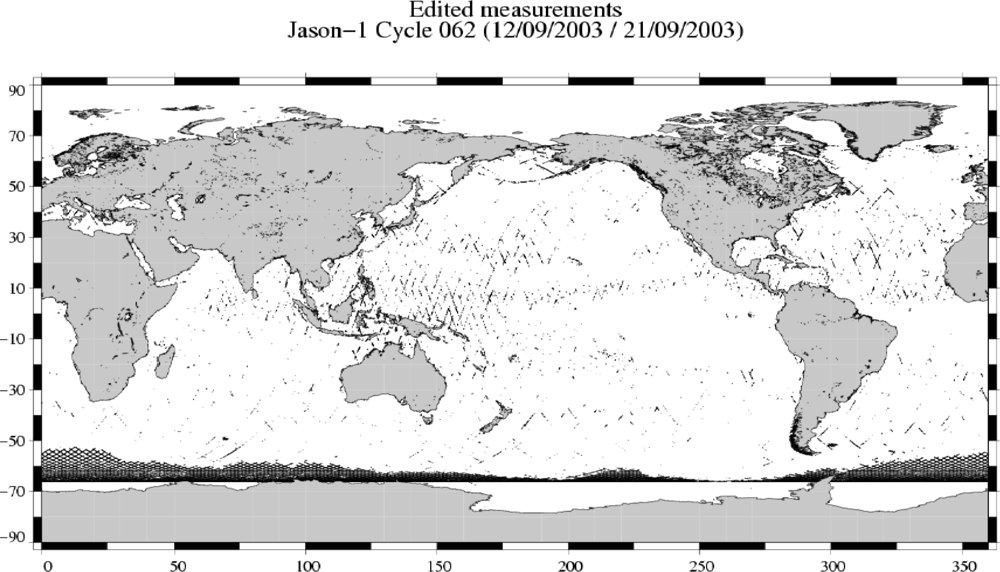
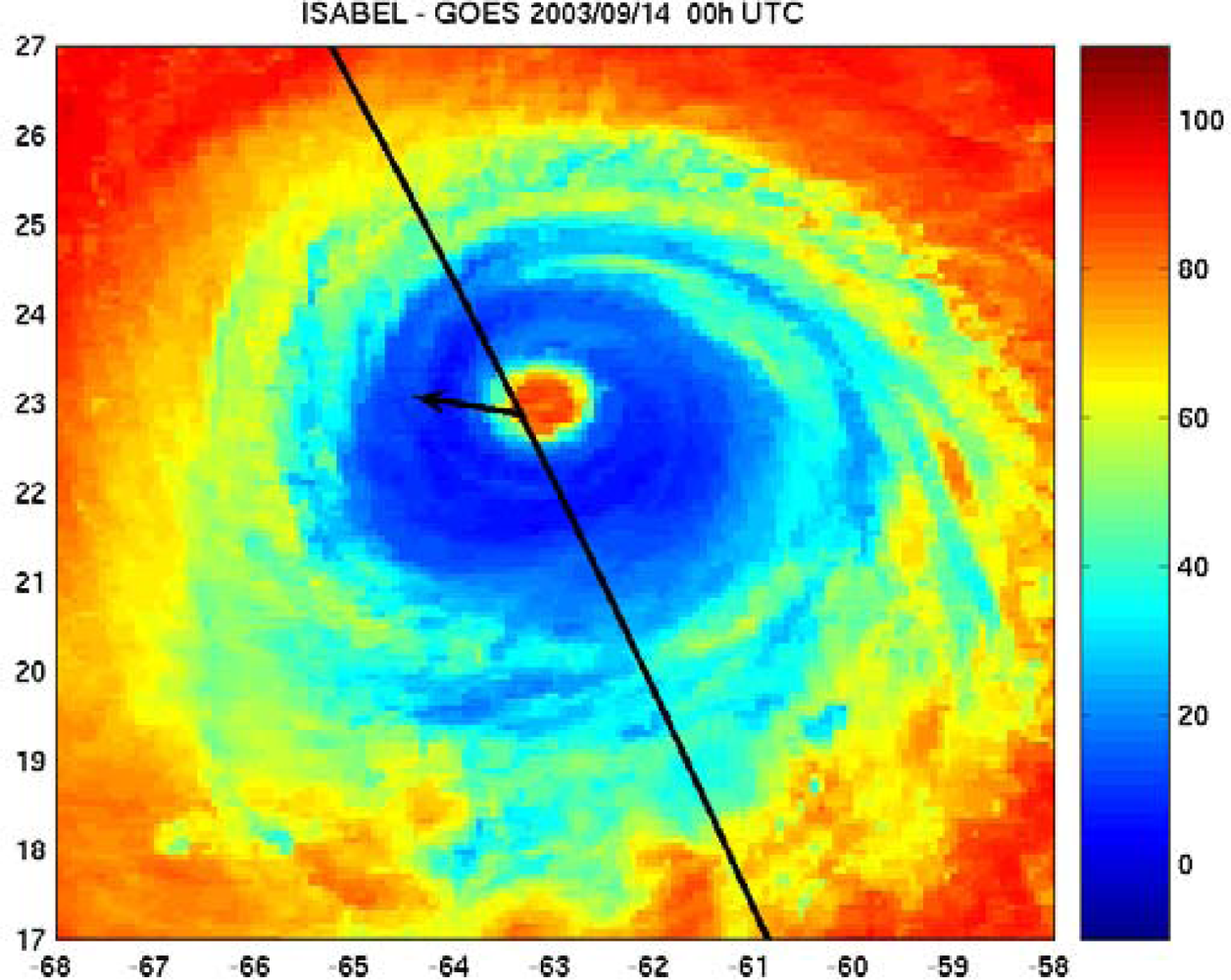
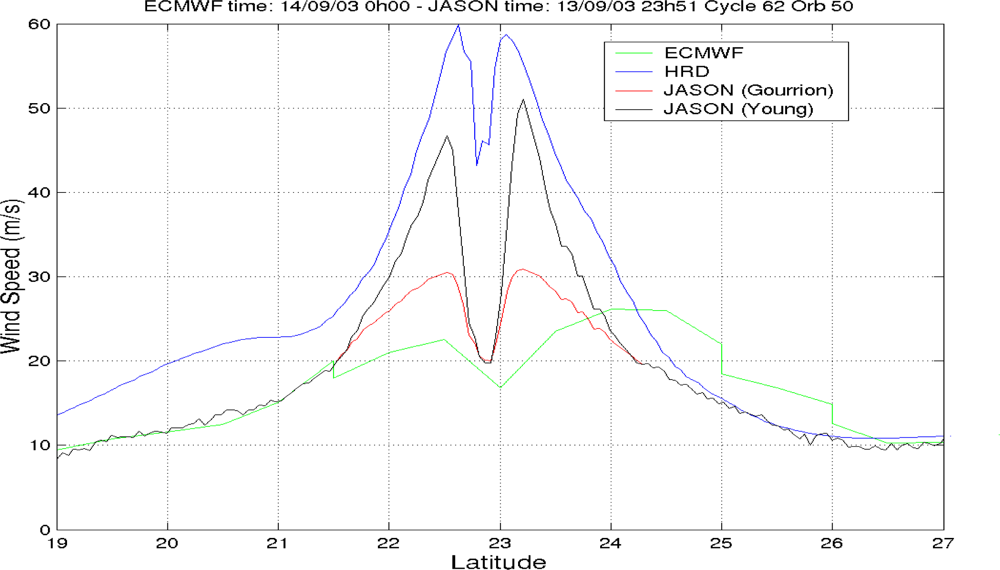
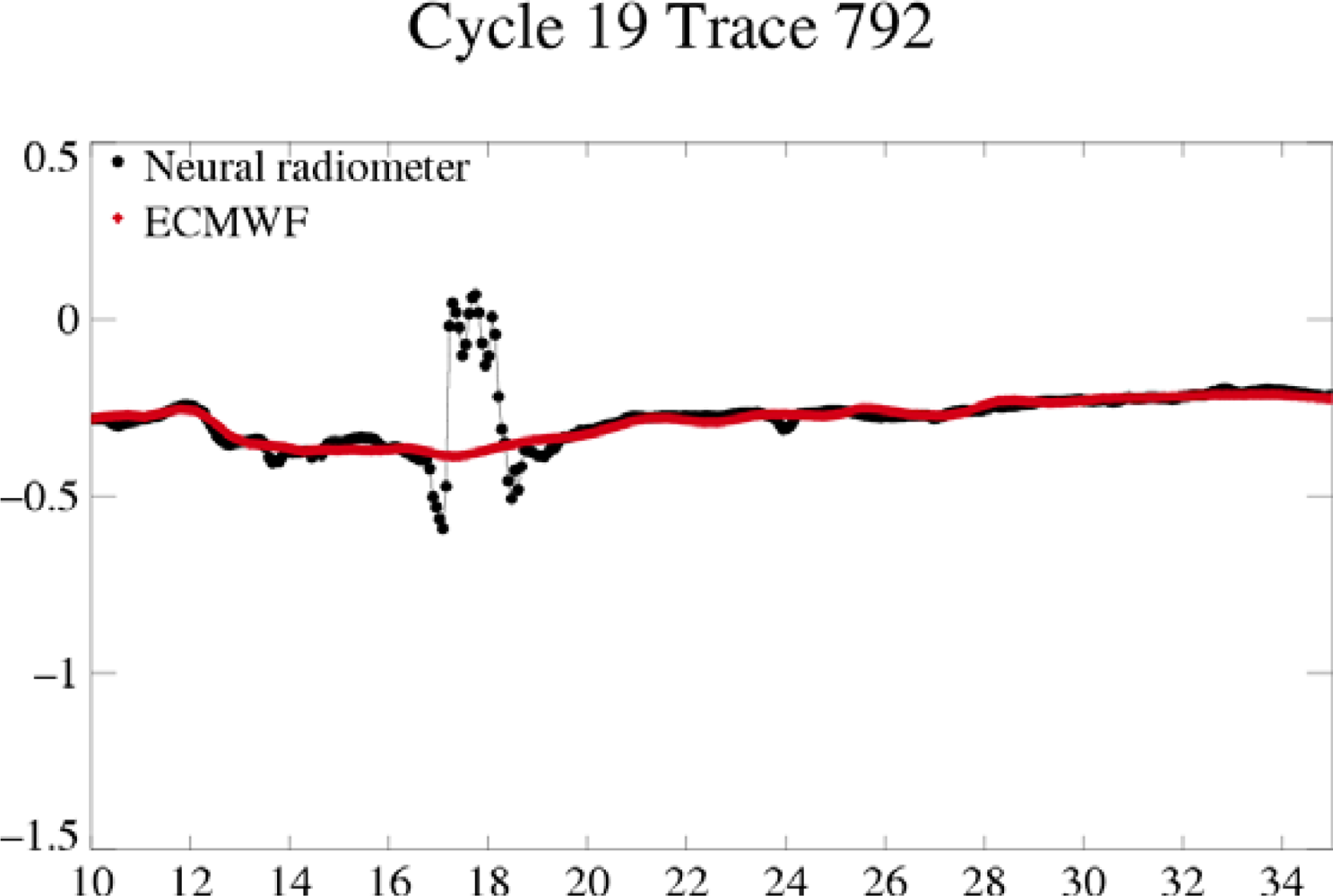
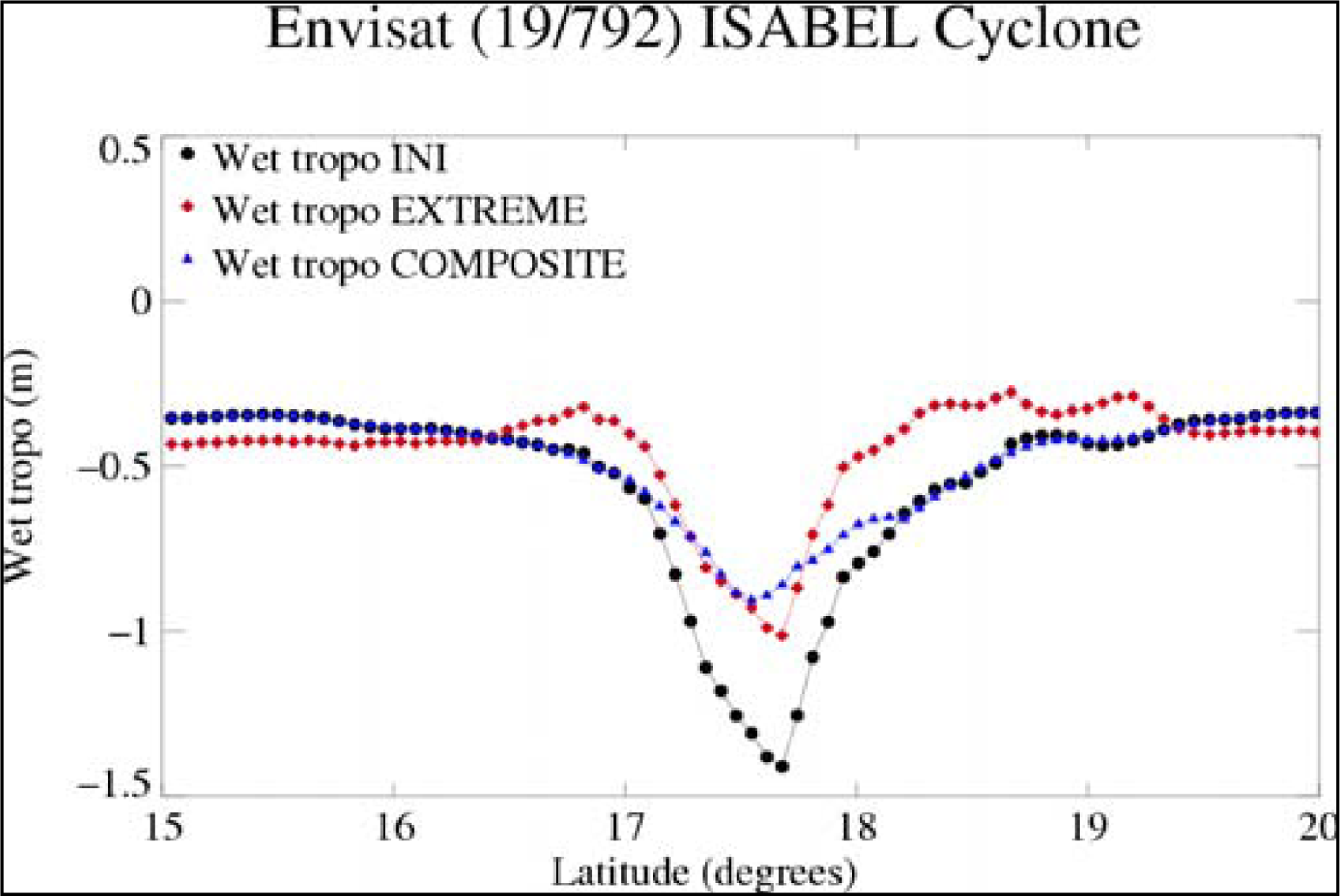
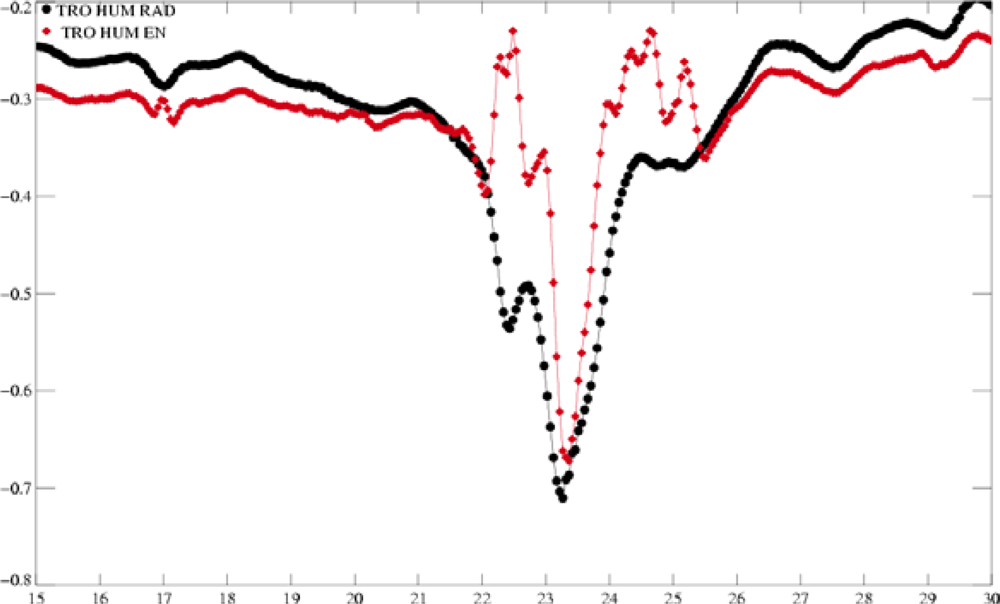

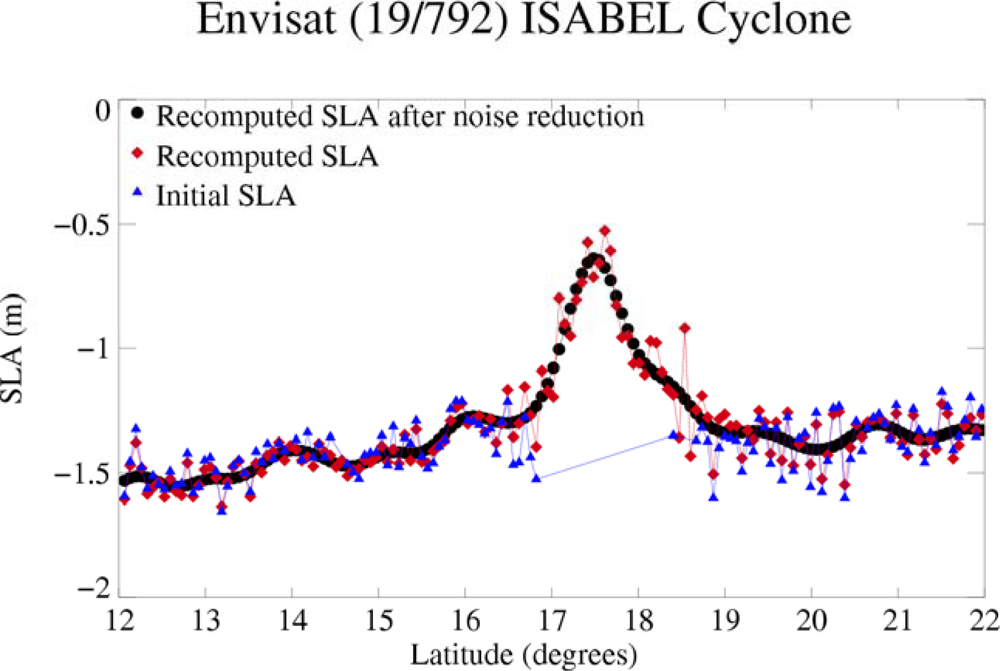

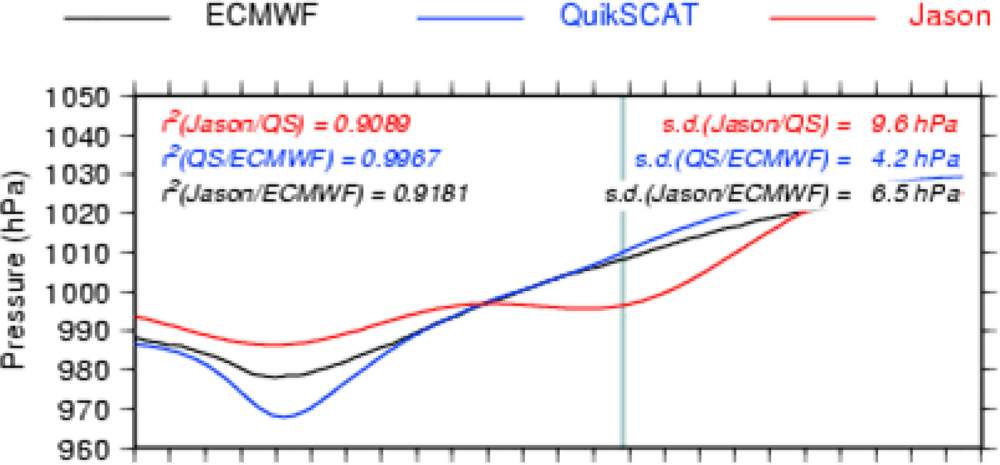

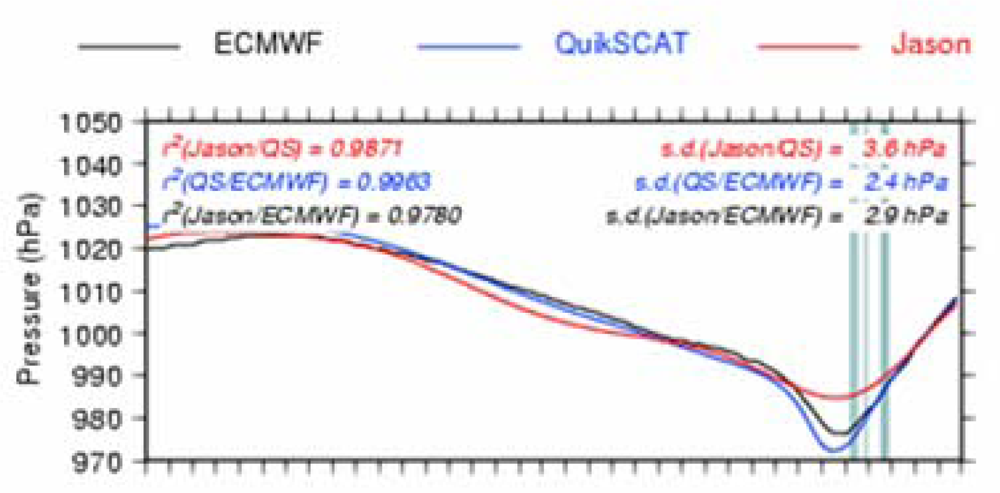

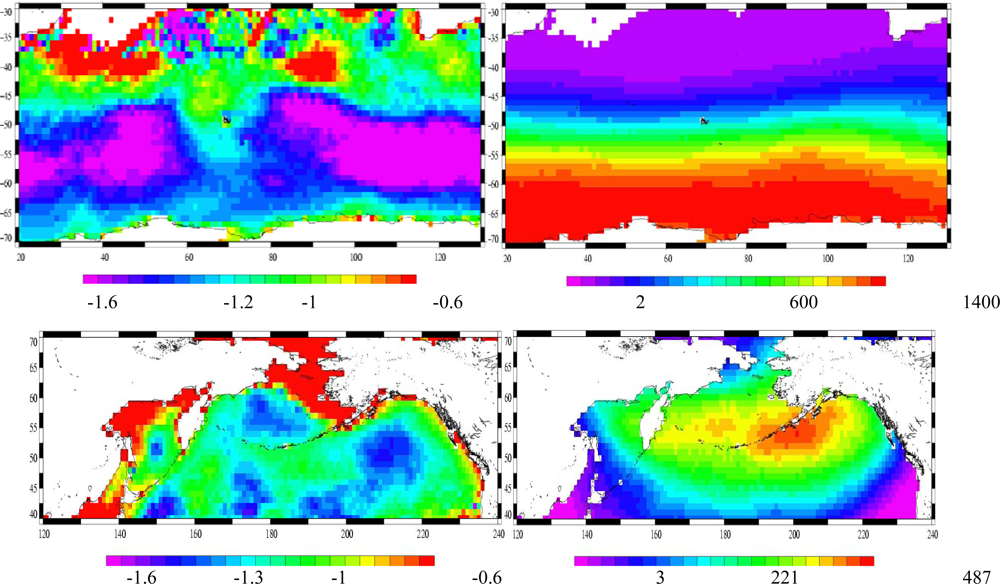
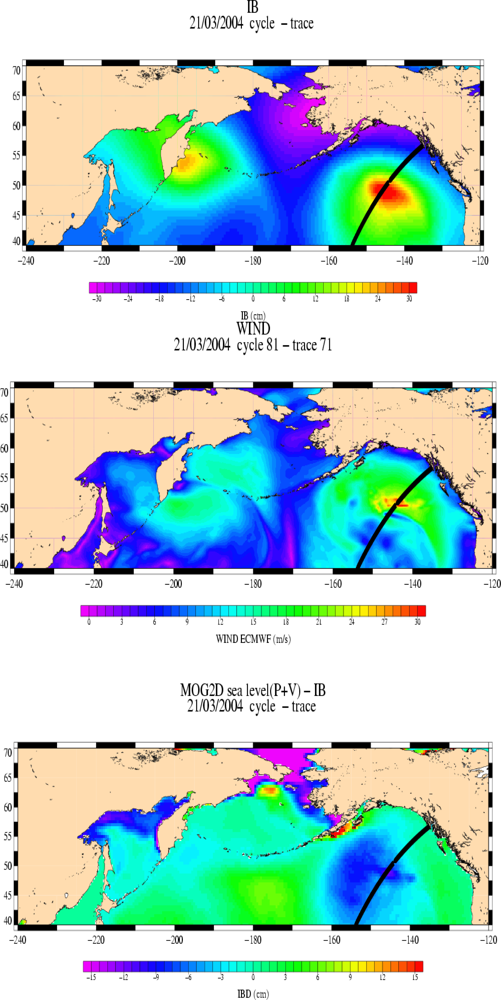

| Envisat | Jason-1 | |||
|---|---|---|---|---|
| Ku band | S band | Ku band | C band | |
| SWH | 0.11 | 0.42 | 0.12 | 0.3 |
| Range | 0.02 | 0.07 | 0.016 | 0.04 |
| SIGMA-0 | 0.03 | 0.06 | 0.02 | 0.03 |
| Ocean | A (hPa/cm) with 95% confidence level | B (hPa) | Correlation | Nb of samples | Error on 2004 rms/mean (hPa) |
|---|---|---|---|---|---|
| North Atlantic | −0.796 ± −0.00011 | −172.89 | −0.83 | 6962 | 5.25/−0.4 |
| North Pacific | −0.77 ± −0.00011 | −173 | −0.84 | 6654 | 5.2/−0.3 |
| Indian | −0.817 ± −0.00008 | −175.35 | −0.88 | 6810 | 5.16/−1.2 |
| N.Atlantic | N.Pacific | Indian | |
|---|---|---|---|
| Mean correlation coefficient | 0.96 | 0.95 | 0.96 |
| 0.96 | 0.94 | 0.96 | |
| % of correlation coefficient < 0.8 | 6.7 | 8.5 | 11.8 |
| 8.1 | 6.4 | 10.8 | |
| Ocean | A (hPa/cm) with 95% confidence level | B (hPa) | Correlation | Nb of samples | Error on 2004 (hPa) |
|---|---|---|---|---|---|
| North Atlantic | −1.13 ± −0.00005 | −2.7 | −0.91 | 7447 | 3.57/−0.34 |
| North Pacific | −1.07 ± −0.00003 | −0.95 | −0.94 | 7407 | 3.45/0.15 |
| Indian | −1.2 ± −0.00007 | −4.66 | −0.87 | 8109 | 4.77/−0.81 |
© 2009 by the authors; licensee MDPI, Basel, Switzerland This article is an open-access article distributed under the terms and conditions of the Creative Commons Attribution license (http://creativecommons.org/licenses/by/3.0/).
Share and Cite
Carrère, L.; Mertz, F.; Dorandeu, J.; Quilfen, Y.; Patoux, J. Observing and Studying Extreme Low Pressure Events with Altimetry. Sensors 2009, 9, 1306-1329. https://doi.org/10.3390/s90301306
Carrère L, Mertz F, Dorandeu J, Quilfen Y, Patoux J. Observing and Studying Extreme Low Pressure Events with Altimetry. Sensors. 2009; 9(3):1306-1329. https://doi.org/10.3390/s90301306
Chicago/Turabian StyleCarrère, Loren, Françoise Mertz, Joel Dorandeu, Yves Quilfen, and Jerome Patoux. 2009. "Observing and Studying Extreme Low Pressure Events with Altimetry" Sensors 9, no. 3: 1306-1329. https://doi.org/10.3390/s90301306




